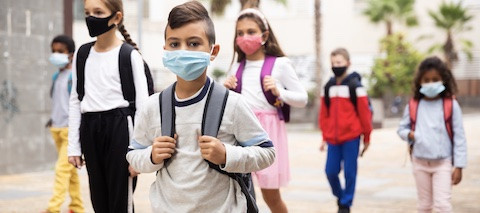
GCED Basic Search Form
Quick Search
Вы здесь
Новости

By Alejandro Vera and Martín Scasso, UNESCO Regional Bureau for Education in Latin America and the Caribbean (OREALC/UNESCO Santiago)
It has already been a year since the start of the COVID-19 pandemic, when almost every country in Latin America and the Caribbean decided to suspend in-person learning. This was the education sector’s first swift reaction to a situation that was both unprecedented and uncertain. It was to be followed by a series of strategies designed to provide educational continuity, which involved diverse measures and stakeholders.
It has been a year of uncertainty, dynamic scenarios and accelerated processes. Reflecting back on what happened in 2020 allows us to better understand the events in question and should help us to make better decisions in the future.
This reflection is made possible by the numerous efforts that were made to monitor countries’ educational responses in different contexts and on different scales during the crisis. In this regard, due to their scope, two global initiatives have been particularly important: the Global Monitoring of School Closures Caused by COVID-19, conducted by UNESCO; and the Survey on National Education Responses to COVID-19 School Closures, conducted by UNESCO, UNICEF and the World Bank. Two surveys were carried out: one that took place in April and the other in October 2020. A third phase is currently underway.
Based on the information collected from these inquiries, the National education responses to COVID-19: the situation of Latin America and the Caribbean report by the OREALC/UNESCO Santiago, presents a regional perspective on the in-person learning situation in 2020, the countries’ responses to ensure pedagogical continuity and support to the education community, and the status of plans for reopening at the moment that the survey was carried out.
What does the data tell us about what happened in 2020? How did Latin American and Caribbean countries react to the crisis caused by COVID-19 in the educational sphere?
Analysing the number of days accumulated without in-person learning reveals that the region’s nations reacted quickly in closing schools at the start of the pandemic, but that they have experienced difficulties in finding the right paths to return to in-person learning. By the end of 2020, various countries – including the most populous – had been unable to start the reopening process. From the beginning of the pandemic to December 2020, over 100 million of the region’s students had no access to any kind of in-person learning.
Upon analysing the national educational responses that have been implemented, a markedly heterogeneous picture emerges. The data reveal that countries had to come up with their own answers, with no precedent that they could follow, without a script or a prescription. Perhaps the clearest indicator that can be used to identify similar responses is the start date of the academic year in each country. The number of school days affected tends to fall along these lines, with the number being lower in those countries that begin the academic year in August or September.
Another finding of the strategies analysed is that the measures implemented are predominantly those requiring lower investment, while the costliest tend to be implemented less frequently, demonstrating the budgetary constraints under which countries are working. As an example, when analysing the measures taken to support teachers, those that involved training and the distribution of content for remote classes have been implemented by more countries than the provision of computer equipment or funds to improve connectivity.
Many responses also demonstrate the climate of uncertainty in which decisions were made during 2020. It is notable that many countries have no answer when asked about their future plans, such as changes to the school calendar, strategies for returning to in-person learning or the financial resources available for the next school year. This underlines the exceptional nature of the COVID-19 crisis: not only has it been an unprecedented situation, but its duration and evolution have also been undetermined, which have affected decision-making.
The survey addresses various areas, one of the key aspects of which is the clear lack of information about the loss of learning opportunities at the national level, which is expected to be a relevant issue for 2021. As countries have suspended or postponed the majority of their national and international-level assessments, the information available at this time, and the information that is expected to be available in the near future, is anticipated to be provided mainly by individual schools. Although this information is a key resource for teachers on a local level, it has fundamental limitations when it comes to providing a diagnosis at the national level.
These scenarios may have changed since Latin American and Caribbean countries completed the survey, but it is probable that the structural conditions in the region’s education systems have remained unchanged and will obstruct the implementation of many measures necessary to respond to the effects of the pandemic. A lack of access to different educational resources, as well as their unequal distribution within each country, pose additional challenges in planning for education.
It is important to insist that education is prioritized in national response and recovery plans and that, above all, educational budgets are maintained, particularly when considering that many of the region’s countries have recently begun a new school year. Another priority is the strengthening of information sharing and the development of a rapid diagnosis system to understand the severity of effects, evaluate the scope of the measures implemented and the ability to respond. In this regard, it is important to place those populations with a higher risk of exclusion at the centre of government policy. Now more than ever, they need concrete effective action to ensure that inequalities are not deepened.
URL:
https://en.unesco.org/news/educational-responses-covid-19-what-was-outcome-2020
